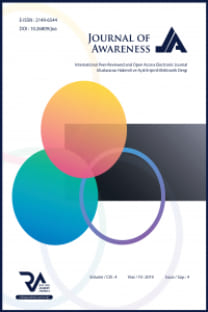TÜRKİYE’DE SADIK HİDAYET
Türklerle İranlılar binlerce yıldır hem Orta Asya hem de Anadolu’da birbirlerine komşu olarak yaşarlar. Kültürel iletişim ve etkileşimleri kaçınılmazdır. Dil ve kültürel unsurları birbirine girmiştir. Elbette binlerce yıl devam eden Turan-İran mücadelesi farklı alanlarda bugünün şartlarında kendine özgü hususiyetleriyle devam etmektedir. Türkler X. asırdan itibaren Orta Asya steplerinden İran coğrafyasına doğru inerek devletleşmişlerdir. Şu kesin olarak söylenebilir ki; X. yüzyıldan sonra İran coğrafyasında İran asıllı bir devletten söz etmek neredeyse mümkün değildir. Ancak Türkler bu coğrafyada Fars edebiyatına sahip çıkmış ve ondan istifade etmiştir. Dolayısıyla Fars edebiyatının altın asrının Selçuklu dönemi olması tesadüfi değildir. Her iki millet aynı coğrafyada kader birliği içindedir. XIX. yüzyılda imparatorlukların dağılma sürecinde de her iki millet aynı kaderi paylaşmıştır. Dünyanın siyasi, coğrafi, kültürel ve fikri çehresini değiştiren hadiseler benzer bir şekilde her iki coğrafyada da aynı zamanda yaşanmıştır. Avrupa ülkelerine yapılan seyahatler, oralarda siyasi elçi bulundurma, ilim adamlarının ve öğrencilerin Avrupa’ya gitmesi, Daru’l-Fünun ve matbaanın kurulması, meşrutiyet düşüncesi ve meclisin kurulması, gazete yayımlanması her iki coğrafyada yaşanan benzer muasır olaylardır. Bütün bu değişikliklerle beraber edebiyat ve edebi meselelere bakış, edebiyatın toplumsallaşması gibi düşünceler her iki ülkede edipleri, eski edebi formları ve içerikleri terk etmeye ve yeni şeyleri yeni edebi formlarla söylemeye sevk etmiştir. Hikaye, roman, tiyatro, serbest şiir ve gazete Avrupa’nın tesiriyle kabul ettiğimiz ögelerdir. Eskiden edebiyatın merkezi İstanbul ve İsfahan iken şimdi o merkez Paris ve Londra oluyordu. İşte bütün bu değişim sürecinde İran meşrutiyeti zamanında doğan Sadık Hidayet kendi zamanının edebi anlayışı içinde Farsçanın ilk romanı sayılabilecek dünyaca ünlü (Bûf-i Kûr) Kör Baykuş romanı ve daha onlarca hikayesi ile toplumsal problemleri yeni edebiyat formuyla anlatmaya çalışarak toplumu irdelemiştir. Biz bu çalışmamızda Türkiye’de Sadık Hidayet’in eserleri üzerine yapılmış akademik çalışmaları, çevirileri, makaleleri ve diğer araştırmaları bir bibliyografya denemesi olarak değerlendireceğiz.
SADIQ HEDAYAT IN TURKEY
For thousands of years Turks and Iranians have been living as neighbours in Central Asia as well as in Anatolia. Cultural contacts and interactions between these two communities have been inevitable. The linguistic and cultural elements on both sides have been effected by each other. Of course, the age-old Turan-Iran rivalry is continuing with a distinct feature according to the contemporary circumstances. Since the 10th century, Turks have migrated from Central Asia to the traditionally Iranian geography and have established nation-states. It can be undoubtedly said that after the 10th century it is not possible to talk about a state in the Iranian geography that traces its roots only to Iran. The Turks in this region have adopted the Persian literature and have benefited from it. Therefore, the golden century of Persian literature being experienced under the Seljuk dynasty is not just a coincidence. Both the societies in this region share a common fate. During the collapse of collonial empires in the 19th century both communities had gone through a similar period. The events that have altered the world’s politics, geography, culture and thoughts have been witnessed in a similar manner and at the same time in both the territories. The journey to the European countries, appointment of political envoys there, outflow of scholars and students to Europe, establishment of Darul-Funun and printing houses, emergence of constitutional ideas and establishment of parliaments and spread of newspapers took place at both the places. With all these changes there has also been a change in the perspective towards literature and literary issues. The ideas like socialization of literature have forced scholars in both the countries to drop the old literary format and substance and to explain new things in new literary styles. Stories, novels, theatres, free verses and newpapers are examples of the literary elements that have been adopted under European influence. Istanbul and Isfahan- once the centers of literature- were replaced by Paris and London. Sadiq Hedayat who was born during this transformational era and the period of constitutionalism in Iran, published a world famous novel called Bûf-i Kûr (The Blind Owl) with the understanding of the time he lived in. Bûf-i Kûr (The Blind Owl) can be considered as the first novel in Persian literature. Sadiq Hedayat closely analyzed the society by trying to describe the social problems in the tens of other stories he authored in the new literary format. This paper will discuss translations and academic works undertaken in Turkey on Sadiq Hedayat’s published works.
___
- AKYÜZ, K. (1995), Modern Türk Edebiyatının Ana Çizgileri, İnkılap Kitabevi, İstanbul.
- AYDIN, Ş. (2009), Klasik Türk ve Fars Edebiyatı Münasebetlerine Umumi Bir Bakış, Ekev Akademi Dergisi, Yıl: 13, Sayı: 38.
- BANARLI, N.S. (1997), Resimli Türk Edebiyatı Tarihi, Milli Eğitim Bak., Milli Eğitim Basımevi, İstanbul.
- HAKİMÎ, İ. (2012), Edebiyat-ı Muasır-ı İran, (Trc. Dr. Şadi Aydın), Çağdaş İran Edebiyatı, Anekdot Yayınevi, İskenderiye Kitaplığı, Ankara.
- KANAR, M. (1999), Mehmet Kanar, Çağdaş İran Edebiyatı’nın Doğuşu ve Gelişmesi, İletişim Yayınları, İstanbul.
- MİR ABİDÎNÎ, H. (2002), Sad Sal-i Dastan Nivisî Der İran, İran Öykü ve Romanının Yüz Yılı I. Cilt (Trc. Derya Örs), Nüsha Yayınları, Ankara.
- NECATİGİL, B. (2017), Kör Baykuş, Sadık Hidayet, Yapı Kredi Yayınları, İstanbul.
